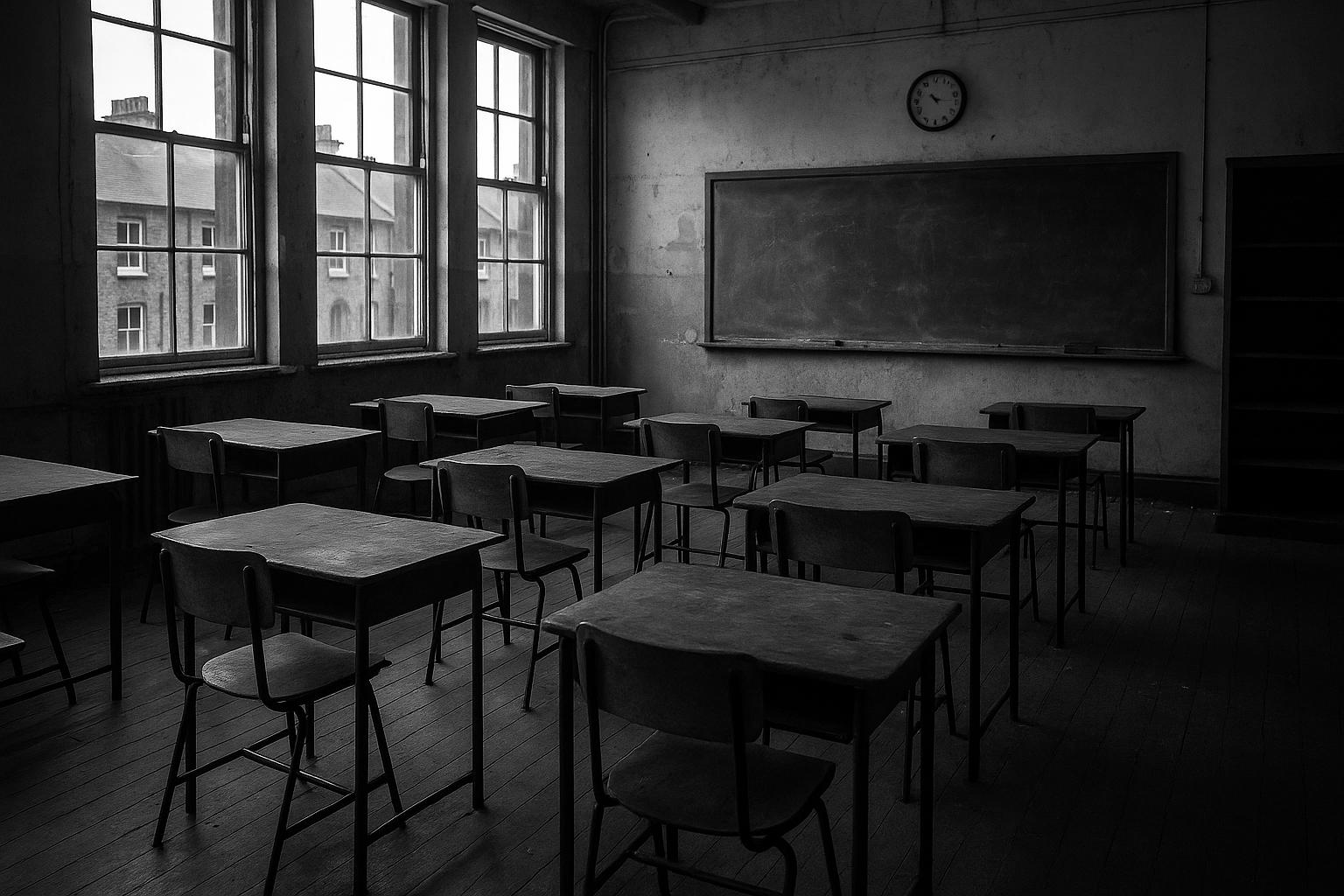A sharp 20% decline in birth rates across London over the past decade has caused a significant decrease in primary school pupil numbers, putting over 30 schools at risk of closure or merger. Experts warn this crisis, driven by housing costs and the cost of living, threatens the city’s educational and economic future.
London is facing a critical challenge in its education sector as a significant decline in birth rates over the past decade has led to falling pupil numbers in primary schools, threatening the viability of many institutions. Data from London Councils reveal a staggering 20% drop in live births across the capital between 2012 and 2022, equating to 27,490 fewer children entering the school system. This decline has been felt most acutely in the city’s inner boroughs, where demographic shifts have been most pronounced.
This sharp reduction in the number of school-age children has dire financial implications for schools in London. Funding for schools is largely dependent on pupil numbers, but the overhead costs for running a school do not significantly decrease as the number of students falls. Schools still require a consistent number of teachers, maintenance, and operational expenses, yet receive less funding, which can quickly drive them into deficit. As a result, many schools face tough choices, including narrowing the curriculum, reducing extracurricular activities, cutting staff, or in the worst cases, closure. More than 30 primary schools in London are reportedly at risk of closing or merging before September, illustrating the urgency of the crisis.
Experts attribute the birth rate decline in London to a convergence of socio-economic factors. High housing costs, escalating childcare expenses, and the broader cost of living crisis have led many couples to delay or forgo having children altogether. In 2022, only 106,696 babies were born in London, the lowest number since 2008, with the total fertility rate falling by 30% over the past decade to 1.39 babies per woman. This rate is notably the lowest fertility rate nationally, reflecting the unique pressures faced by Londoners. Additionally, families leaving the city due to Brexit and the pandemic have compounded the decreases in pupil numbers.
The downward trend in birth rates and pupil numbers has broader implications beyond the immediate financial stress on schools. It signals demographic shifts that will affect London’s labour market and economic future. A smaller generation of children today means a reduced working-age population in the years to come, potentially increasing challenges for public finances and the provision of services. This demographic crunch mirrors national trends observed in England and Wales, where birth rates have also hit record lows, intensifying concerns about sustainable economic growth and societal support structures.
London’s education sector is thus caught in a precarious position: managing the immediate financial strain of shrinking pupil rolls, while grappling with the long-term effects of a declining birth rate. Without addressing the underlying causes such as housing affordability and cost of living, the capital risks further erosion of its educational infrastructure and the stability of communities reliant on robust school networks.
📌 Reference Map:
- Paragraph 1 – [1], [4], [2]
- Paragraph 2 – [1], [4], [7]
- Paragraph 3 – [2], [5], [1]
- Paragraph 4 – [6], [3], [1]
- Paragraph 5 – [1], [4], [3]
Source: Noah Wire Services
Noah Fact Check Pro
The draft above was created using the information available at the time the story first
emerged. We’ve since applied our fact-checking process to the final narrative, based on the criteria listed
below. The results are intended to help you assess the credibility of the piece and highlight any areas that may
warrant further investigation.
Freshness check
Score:
8
Notes:
The narrative presents recent data on London's declining birth rates and its impact on primary school closures. Similar reports have been published in the past year, indicating ongoing coverage of this issue. The article includes updated data, which may justify a higher freshness score but should still be flagged. ([standard.co.uk](https://www.standard.co.uk/news/education/london-school-closures-places-pupils-falling-birth-rate-b1158175.html?utm_source=openai), [standard.co.uk](https://www.standard.co.uk/news/education/london-school-closures-falling-pupil-numbers-families-councils-b1135224.html?utm_source=openai), [standard.co.uk](https://www.standard.co.uk/news/london/school-places-birth-rate-london-councils-education-funding-send-special-needs-b1211852.html?utm_source=openai))
Quotes check
Score:
7
Notes:
The article includes direct quotes from Education Secretary Bridget Phillipson and teacher Carly Slingsby. A search reveals that similar quotes have been used in other reports, suggesting potential reuse of content. ([standard.co.uk](https://www.standard.co.uk/news/education/school-closures-education-secretary-bridget-phillipson-falling-birth-rate-b1233754.html?utm_source=openai))
Source reliability
Score:
9
Notes:
The narrative originates from The Standard, a reputable UK news outlet. The Education Secretary's statements are corroborated by other reputable sources, enhancing the report's credibility. ([standard.co.uk](https://www.standard.co.uk/news/education/school-closures-education-secretary-bridget-phillipson-falling-birth-rate-b1233754.html?utm_source=openai))
Plausability check
Score:
8
Notes:
The claims about declining birth rates and their impact on London's schools are consistent with data from London Councils and other reputable sources. The narrative aligns with known socio-economic factors affecting London's population trends. ([londoncouncils.gov.uk](https://www.londoncouncils.gov.uk/news-and-press-releases/2024/fall-demand-school-places?utm_source=openai))
Overall assessment
Verdict (FAIL, OPEN, PASS): OPEN
Confidence (LOW, MEDIUM, HIGH): MEDIUM
Summary:
The narrative presents updated data on London's declining birth rates and its impact on primary school closures, with quotes from credible sources. However, similar reports have been published in the past year, and some quotes appear to be reused, indicating potential recycled content. While the source is reputable and the claims are plausible, the presence of recycled content and reused quotes warrants further scrutiny.
